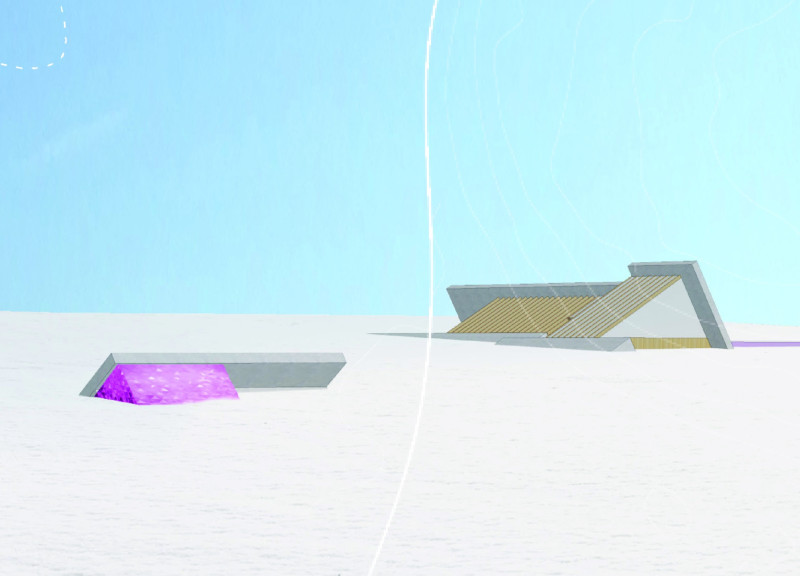5 key facts about this project
### Overview
Located in Iceland, the project "Future Ruins of the Northern Lights" serves as a conceptual exploration of the intersection between natural phenomena and human habitation. The intent is to create a space that harmonizes with the natural environment, particularly emphasizing the Northern Lights. By acknowledging the ephemeral nature of human constructs, the design aims to foster a dialogue that respects the landscape while allowing for human engagement with its awe-inspiring features.
### Spatial Strategy and User Experience
The architectural layout comprises various functional spaces tailored to enhance visitor experiences while engaging with the surrounding landscape. Key facilities include a guest center, communal hall, accommodation lodges, and campsites, each purposefully designed to facilitate ease of access and promote interaction with the natural display of the aurora borealis. The site's topography informs the thoughtful circulation patterns, guiding visitors along pathways that minimize disruption to the landscape and highlight scenic views.
### Materiality and Environmental Integration
Material selection is central to the project's design philosophy, emphasizing durability and harmony with the environment. Wood is utilized for both structural and aesthetic purposes, providing warmth and a connection to the natural surroundings. Concrete ensures structural integrity, while being refined to resonate with the site's aesthetics. Glass is incorporated strategically to offer unobstructed views of the Northern Lights, enhancing natural light without compromising thermal efficiency. Steel frames contribute to the robustness required in Iceland's climate, aligning modern construction techniques with the project's environmental ethos.
Through these design elements, the project not only prioritizes sustainability but also establishes areas for relaxation and reflection, encouraging visitors to engage with the landscape cognitively and emotionally. The concept of “ruins” invites contemplation on architectural temporality, raising awareness of the evolving relationship between human interventions and the natural world.



















































